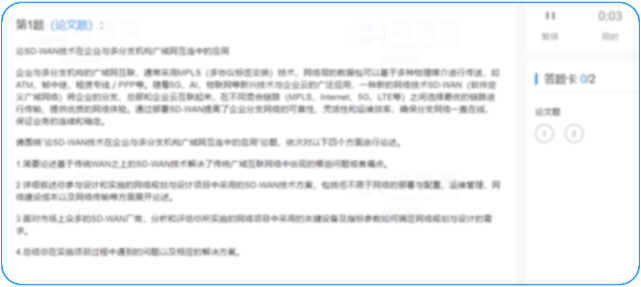
policy based route
Policy based routing (PBR) is a technique used in computer networking to control the path traffic either inbound or outbound should follow based on policies defined by the network administrator. PBR is an alternative to the traditional routing table lookup method that determines the next hop for packets based on the destination IP address.
PBR uses a policy database to define policies that match specific criteria of the traffic flow. The policies can be based on any aspect of the packet header such as source IP address, destination IP address, protocol, port, or even the type of traffic such as voice, video, or data. Once the traffic matches the criteria specified by the policy, PBR routes the traffic based on a predefined set of rules.
Advantages of Policy Based Routing
1. Route Traffic based on Customized Policies: One of the key advantages of PBR is that it allows custom policies to be set that can route traffic based on a specific set of rules. This makes it easier to control and prioritize certain types of traffic on the network.
2. Load Balancing: PBR can be used to distribute traffic across different links, thereby balancing the load and improving the overall performance of the network. This can be particularly useful in environments where high volumes of traffic need to be managed.
3. Redundancy and Failover: PBR can be used to configure redundant links and ensure that traffic is automatically rerouted in the event of a link failure. This can help ensure that mission-critical applications and services remain available and continue to function smoothly.
4. Improved Security: PBR can be used to create granular routing policies that can control traffic flow based on specific criteria such as source or destination IP address. This can help prevent network attacks and ensure that sensitive data is protected.
Disadvantages of Policy Based Routing
1. Complex Configuration: PBR can be quite complex to configure, particularly in large networks where a large number of policies need to be defined. This can be time-consuming and may require a dedicated team of network engineers.
2. Increased Network Overhead: PBR adds an additional layer of complexity to network routing, which can increase the overall network overhead and potentially impact performance. This can be particularly true if the policies used to route traffic are overly complex or poorly designed.
3. Limited Vendor Support: While PBR is supported by most modern network routers, some vendors may offer limited or no support for the technology. This can make it challenging for network administrators to implement PBR in some environments.
Conclusion
Policy-based routing is a useful technique for controlling the flow of traffic in a network, enabling custom routing policies to be defined that can be used to prioritize and route traffic based on a specific set of rules. While PBR has several advantages, including load balancing and improved security, it can be complex to set up and may have an impact on network performance. Careful planning and design are essential to ensure that PBR is used effectively and efficiently.
Keywords: Policy Based Routing, Network, Load Balancing.








